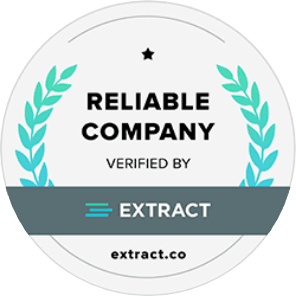Why Should I Invest In SEO?
Here are some compelling SEO facts to consider:
- About 63,000 Google searches are performed every second. A good SEO strategy helps your business compete for some of those search results.
- 93 percent of all online experiences start with a search engine.
- SEO leads close a sale 14 percent of the time, while print advertising and other outbound marketing techniques have a close rate closer to 1.7 percent.
- There are 1.88 billion (& increasing) websites online. SEO lifts your brand from the clutter, helping increase the visibility
- Google says 88 percent of people who perform “near me” searches on mobile will visit the store within one week, and 76 percent will visit within a day. A good local SEO makes sure your business gets more visits.
- Search engines give a close rate of almost 15 percent for new leads. Traditional marketing is less than two percent.
- 75 percent of users stick to the first page of search results. SEO tries to make sure you are on the first page.
- SEO measures your success with real numbers: Using Google Analytics, you can measure important metrics such as website traffic, bounce rate, conversions, and time on site.
- Google says 28 percent of local searches result in a purchase. A good Local SEO strategy will make this a reality for you.
- 96.55% of content gets no traffic from Google. (Source: Ahrefs) Reason#1: These pages have no one linking to them.
Here Are 11 SEO & Related Services We Provide To Our Clients
choose any and then let’s talk
01 Local SEO
Optimizing your business’s visibility in local search results. Common local SEO activities include identifying relevant local keywords, optimizing a business’s Google Business Profile, and creating consistent NAP (name, address, and phone number) citations.
46% of all Google searches have “local intent.”
Your Local SEO ranking depends on these important factors:
- The location that the lierson is searching from
- Sentiment of online reviews
- Keywords used in online reviews
- NAli citations
- Number of “check-ins” at that location
- Quality of Google Business lirofile listing
- Shares on social media
- Keywords used in Google Business lirofile lirofile
- Google Malis star rating for that business
- Sentiment of online reviews
Optimizing your online store (not including the Shopify store as discussed above) to rank higher in search results - getting more traffic, leads, and sales.
Common Ecommerce SEO activities include:
- Research SEO Keywords for eCommerce
- Mix SEO With Other Marketing Channels
- Set up the Essential Tools: Google Analytics, Google Search Console
- Optimize The Content for Your Shopify Store: Titles, Meta content, H tags
- Use Content Marketing: FAQs, Check out competitors' content and do better
- Link Building Strategy for eCommerce: Reviews, guest posts, links from high authority sites
- Fix Technical SEO Issues: Detect and Fix Crawl Errors, Responsive Theme, Fix Broken Links, and Optimize Your Page Speed for SEO on Shopify
03 Shopify SEO
Optimizing e-commerce retailers using the Shopify CMS to help them earn more keyword rankings and organic traffic.
Common Shopify SEO activities include:
- Optimize The Content for Your Shopify Store: Titles, Meta content, H tags, alt text
- Leveraging SEO apps available on the Shopify App Store to automate and enhance various SEO tasks.
- Fix Technical SEO Issues: Detect and Fix Crawl Errors and Responsive Themes, Fix Broken Links, and Optimize Your Page Speed for SEO on Shopify.
- Identifying relevant keywords and phrases that potential customers are searching for through keyword research.
Optimizing your Amazon product listings (Product listing optimization) to increase product visibility and drive more traffic and sales. A9, Amazon’s search algorithm, acts like Google's Algorithm. It looks for keywords - quickly matching the search keyword with the appropriate product. This is the following information that is considered by Amazon to rank products: Keywords, Sales History, Product Reviews, Product pricing, Availability, Sales velocity, Click-through rate, Conversion rate, Product images, Product information
Common Amazon SEO activities include:
- Product listing optimization ensures detailed (product information, pricing, returns policy, multiple languages & location)
- Category optimization (Use Amazon’s Browse Tree Guide) to accurately categorize products for better search results.
- Keyword optimization ensures using relevant, high-volume keywords (including backend keywords) for improved search visibility.
- Run Amazon advertising & branding promotions to drive traffic, boost brand awareness, and make your store memorable.
05 Enterprise SEO
Improving search engine rankings for a large enterprise company - E.g. Large ecommerce site with 10000+ pages, Business with multiple locations, Enterprise business with several websites.
Common enterprise-level SEO approaches include:
- Produce high-quality, SEO-friendly content consistently across multiple channels to reach a larger audience and improve search rankings.
- Implement tools and software to automate repetitive SEO tasks like keyword tracking, link building, and performance reporting, ensuring efficiency and scalability.
- Continuously monitor and optimize your website's technical aspects, such as site speed, mobile usability, and structured data.
06 Technical SEO
Meeting the technical requirements of Google and other search engines to improve organic rankings.
Important Technical SEO topics include:
- Crawling ensures search engines can effectively discover and access your site's pages.
- Ensure your website is optimized for mobile devices to enhance user experience and search rankings.
- Indexing makes sure that your pages are properly indexed by search engines to appear in search results.
- Design a clear, logical website structure to improve navigation and help search engines understand your site's content hierarchy.
- Optimize how your site's content is rendered by search engines for accurate display and performance.
07 On-Page SEO
Also known as "on-site SEO" Optimizing your web page content to be "read" by search engines and users.
Common on-page SEO activities include:
- Craft unique, descriptive, and keyword-rich title tags for each page.
- Create SEO-friendly URLs that are short, descriptive, and include keywords
- Create high-quality, relevant, and engaging content that includes targeted keywords.
- Focus on meta descriptions, header tags, and alt text for images and ensure fast page load times.
- Internal linking is used to connect related content and improve site navigation.
08 International SEO
(Also known as global SEO) Optimizing your website for different countries and languages.
Common international SEO activities include:
- Create country-specific versions of your website (e.g., mywebsite.com/in, mywebsite.com/uk, etc.) to cater to different regions.
- Research and use relevant and popular keywords in each specific target market.
- Translate your content accurately to ensure it resonates with local audiences.
09 Link building
Creating one-way links (“backlinks”) to your website to improve search engine visibility (search engines rank content based primarily on topic relevance and links, which show your authority).
Common link-building activities include:
- Blogger outreach connects with bloggers to secure backlinks from their sites.
- Develop useful tools or resources to attract links from relevant sites.
- Write guest articles for other websites to gain backlinks.
- Reach out to website owners and influencers to request backlinks.
- Create valuable content that naturally attracts backlinks.
- Find and replace broken links on other sites with your relevant content.
- Use PR strategies to get featured in media outlets and earn backlinks.
The 'raw material' for SEO - creating content that other websites can link to. Content marketing makes SEO even more valuable to businesses. With content marketing, you try to build authority and trust ('I know my field') with your audience by sharing your insight and expertise in your industry. SEO activities and Content Marketing work best when used together. SEO helps people find your content; conversely, content helps drive traffic to your site and improves your search engine ranking.
Common content marketing activities include:
- Keep your audience engaged by regularly publishing interesting and informative blog posts.
- Stay active on social media by sharing your content and interacting with your followers.
- Create eye-catching infographics to present data and insights in an easy-to-understand format.
- Offer detailed guides or reports on topics your audience cares about.
11 Video Content
Videos are super popular. Videos can capture your audience's attention, whether it's tutorials, product demos, or fun content.
Consider these facts about online videos:
- When users watch a video, their brand association increases by almost 140 percent. SEO makes sure your videos are optimized for search.
- 54% of email subscribers prefer emails that contain video content. (Source: Wordstream)
- 72% of consumers say they prefer to learn about products and services in a video format.
- 62% of Google searches include video results. (Source: Invideo)
- Users are 3 times more likely to go to watch a video tutorial on YouTube than they are to read a text-based instruction manual. (Source: Google)
- Over 55% of consumers use YouTube to help them make purchase decisions. (Source: Searchenginejournal)
- The average conversion rate for websites with video content is 4.8%. Compare this to the 2.9% conversion rate for sites that don’t have video content. (Source: Wordstream)



